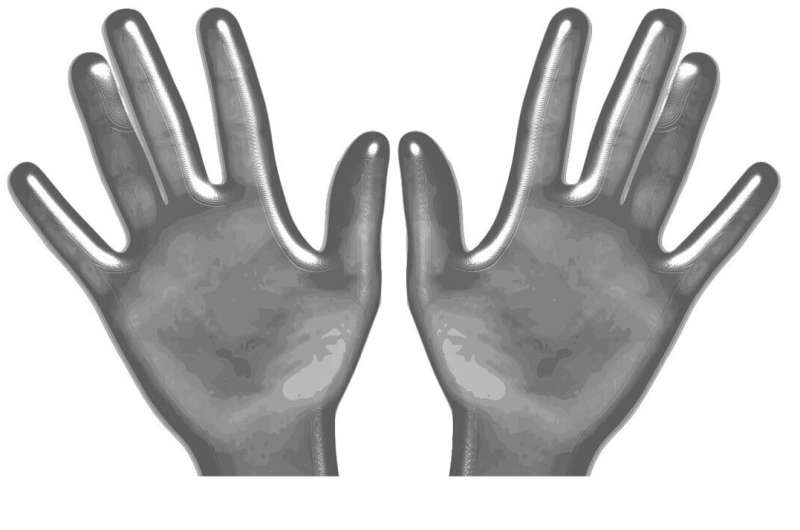This article has been reviewed according to Science X's editorial process and policies. Editors have highlighted the following attributes while ensuring the content's credibility:
fact-checked
peer-reviewed publication
trusted source
proofread
A new way to identify chiral molecules with light could vastly improve detection efficiency

Chiral molecules are those that have two versions that are mirror images, like our right and left hands. These molecules have the same structure but different properties when they interact with other molecules, including those inside our bodies. This is important for example in drug molecules, where only the right- or left-handed version may have the desired effect.
Detecting and quantifying the chirality of matter however has been difficult. Current methods using a form of light that produces a (right- or left-twisting) helix have the problem that each turn of the helix is much larger than the molecules. This creates important challenges for detecting molecular chirality.
Now, researchers at Imperial College London, with collaborators in Germany and Spain, have come up with a new way to use light to detect chirality. Instead of making light helix in space, they have devised a way to make it helix in time using lasers with moderate intensities.
This form of light drives chiral electronic currents inside the molecules, causing one version of the molecule to emit bright light while its counterpart remains dark, vastly improving detection ability. The paper is published in the journal Science Advances.
The team's simulations show this would not require particularly intense lasers, opening the possibility of non-destructive imaging of molecular chirality. The team now plan to put the theory into practice, collaborating with other physicists at Imperial to use femtosecond laser facilities to image and manipulate chiral molecules.
More information: Joshua Vogwell et al, Ultrafast control over chiral sum-frequency generation, Science Advances (2023). DOI: 10.1126/sciadv.adj1429. www.science.org/doi/10.1126/sciadv.adj1429
Journal information: Science Advances
Provided by Imperial College London





















